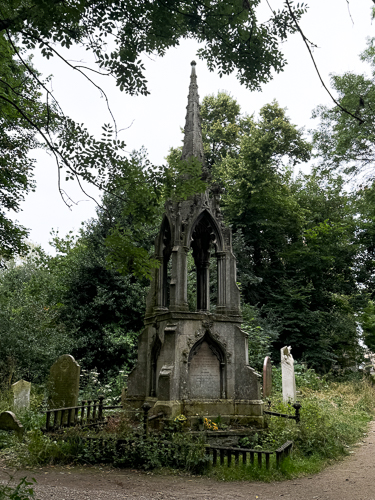July 2024
In a, not quite accomplished yet, attempt at seeing the Magnificent Seven, I was able to get to four on this trip. The Magnificent Seven is an informal term applied to seven large private cemeteries in London. These are Kensal Green Cemetery, West Norwood Cemetery, Highgate Cemetery, Abney Park Cemetery, Brompton Cemetery, Nunhead Cemetery, and Tower Hamlets Cemetery. They were established in the 19th century to alleviate overcrowding in existing parish burial grounds as London’s population grew during the Victorian era.
Tower Hamlets Cemetery
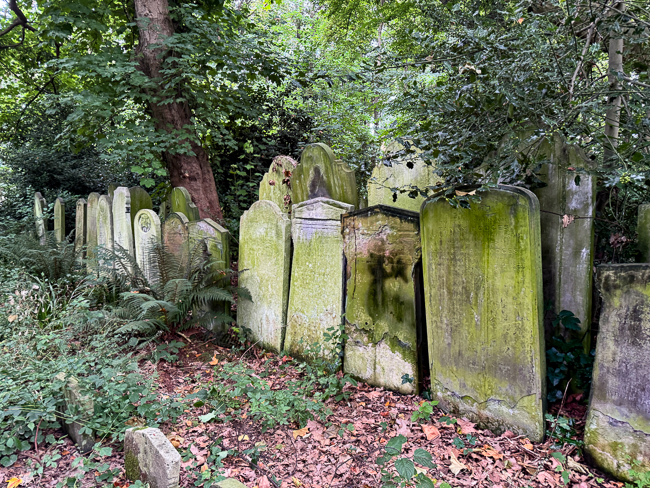
Tower Hamlets opened in 1841 and closed for burials in 1966. The park now contains the cemetery as well as surrounding land. The site is today known as the Site of Metropolitan Importance for Nature and Conservation and is an award-winning local nature reserve.
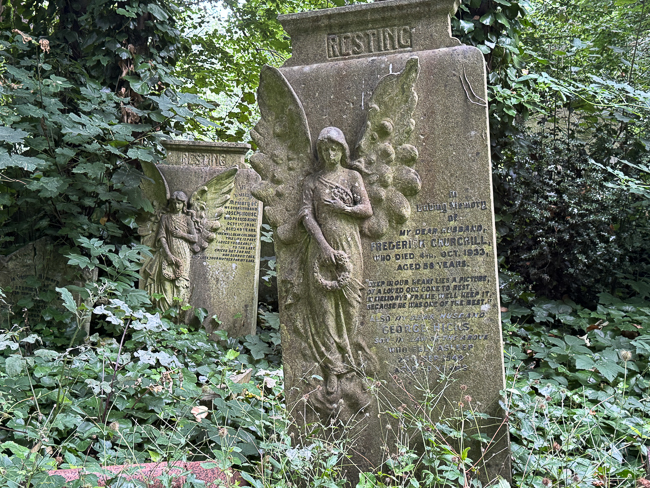
These identical graves belonged to people that, as far as I could see, were not related.
Tower Hamlets Cemetery was very popular with people from the East End, and by 1889, 247,000 bodies had been interred; the cemetery remained open for another 77 years. A good portion of the area is public graves. These were considered the property of the company that formed the cemetery, a block of eleven wealthy men from London. Public graves were used to bury those whose families could not afford a plot. Several persons, entirely unrelated, could be buried in the same grave within a few weeks. Allegedly, some graves were dug 40 feet deep and contained up to 30 bodies.
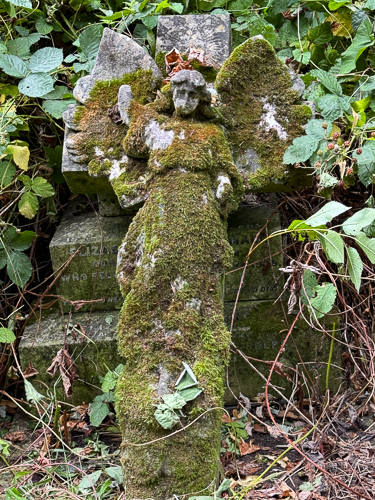
Only 55 years after its opening, the cemetery was reported to be neglected. During the Second World War, the cemetery was bombed five times during raids on the City of London. Burials continued until 1966, when the grounds were closed with the intention of creating an open space.
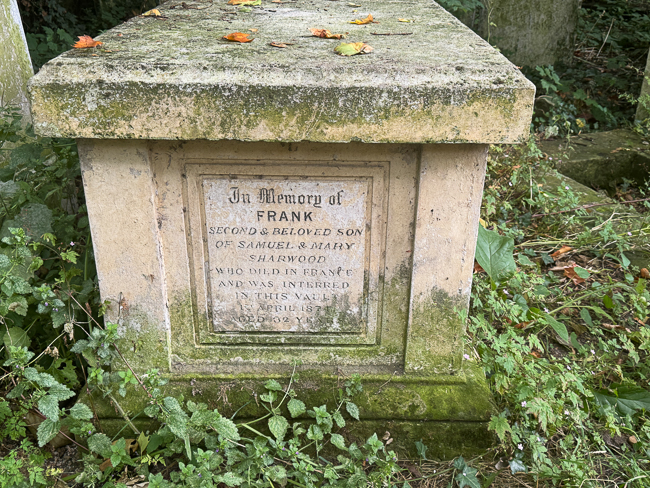
As I walked through this ridiculously overgrown and dilapidated cemetery, I understood and appreciated the intention of an open space. The park was filled with walkers, joggers, and dog owners. However, I also wondered about the feelings of those who buried their loved ones with such care and sadness and whether it was a fit ending.
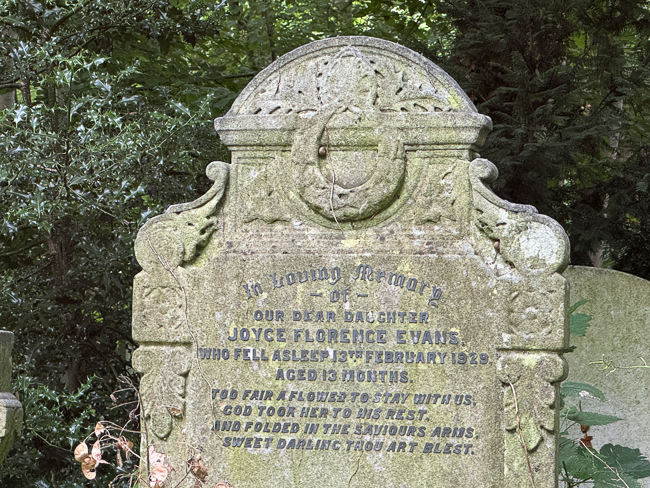
I love cemeteries as does my friend Susan. I commented that I found reading the sentiments on newer tombstones to be difficult but had no problem with those of one hundred years ago or more. Susan pointed out that somehow the very flowery language used in those times somehow eased the pain of reading about their deaths. I think she is correct.
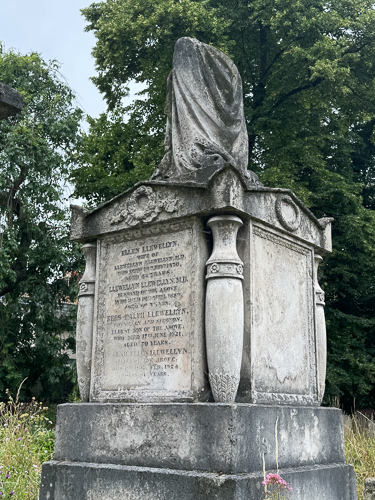
Since Llewellyn never married, he is buried with his parents and siblings, and his inscription reads “REES RALPH LLEWELLYN. PHYSICIAN AND SURGEON.”
The only famous person that I could find buried in Tower Hamlet was Rees Ralph Llewellyn.
Dr Llewellyn maintained a surgery at 152 Whitechapel Road. According to history, Llewellyn was summoned by PC John Thain 96J at approximately 4:00 a.m. on 31 August 1888 to attend Mary Ann Nichols, whose body had been found in Buck’s Row. He conducted a brief examination, pronounced her dead, and had the body transported to the Old Montague Street Workhouse Infirmary Mortuary. He was later recalled to the mortuary when more extensive injuries to the abdomen were discovered by Inspector John Spratling. At 10:00 a.m. on Saturday, 1 September, Llewellyn conducted the post-mortem examination.
I must assume he continued to live a happy life, as that is all I can find about the gentleman.
Nunhead Cemetery

Nunhead Cemetery is the second largest of London’s Magnificent Seven cemeteries. Almost 270,000 people are buried here, dating back as far as 1840. Nunhead is also a nature reserve but in much better shape than Tower Hamlets.
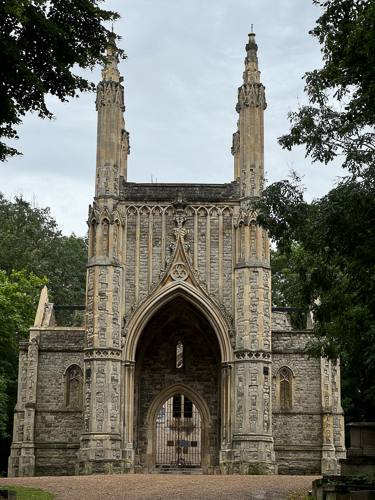
The Anglican chapel was designed by Thomas Little.
There are two chapels within the cemetery’s grounds. The nonconformist chapel is thought to have been destroyed by a bomb during the Blitz, and the Anglican Chapel fell to arsonists in the 1970s.
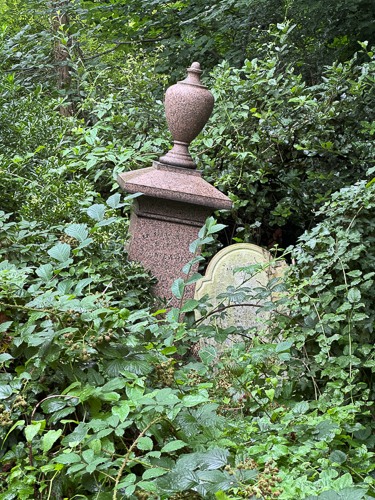
The first burial, in October 1840, was of Charles Abbott, a 101-year-old Ipswich grocer; the last burial was of a volunteer soldier who became a canon of Lahore Cathedral.
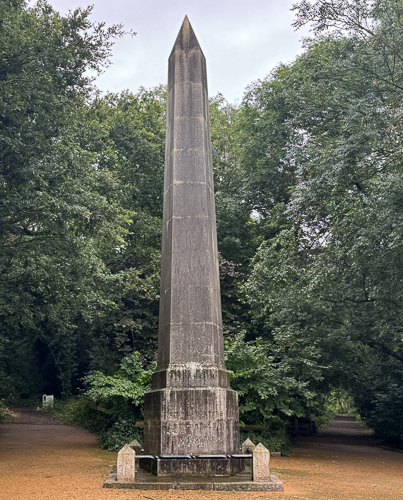
This obelisk is the second “Scottish Political Martyrs Memorial” (the other is in Edinburgh). They are dedicated to the leaders of the Friends of the People Society, popularly called the Scottish Martyrs, including Thomas Muir, Maurice Margarot, and Thomas Fyshe Palmer, who were transported to Australia in 1794. Radical MP Joseph Hume erected the obelisk in 1851–52.
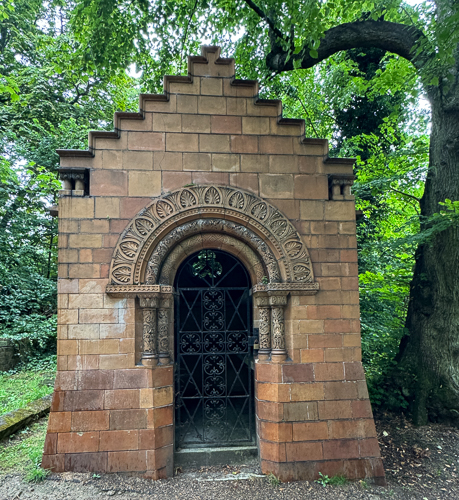
This mausoleum was built for Mrs Laura Stearns of Twickenham, who died in 1900. Her father, William Chillingworth, a wine merchant, is buried next to her in his own sepulcher. They were the owners of Radnor House in Twickenham, known locally as Pope’s Villa, because it was built on the site of Alexander Pope’s original house, which still stands and is now an independent school.
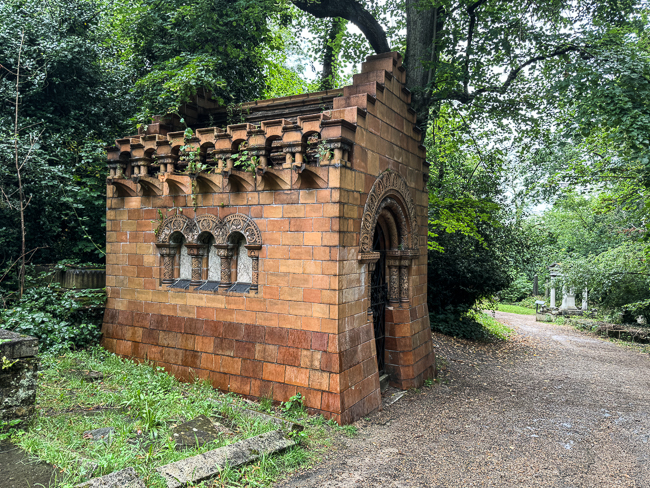

Monument for John Allan (1790-1865)
The sculptor of John Allan’s tomb was Matthew Noble. Noble was a partner in a City of London shipping firm but also an amateur archeologist. That might explain why his tomb is based on the 370 BC Payava Tomb of Xanthos.

According to a plaque nearby, this tomb is the vault for the family of Vincent Figgents. Vincent was a City of London typefounder who worked his way up from an apprentice. On his retirement in 1836, he handed over to James and his elder brother Vincent II. Vincent II died in Nice at the age of 53, and his body was brought back to the family vault. James took an active interest in City affairs and became MP for Shrewsburty from 1868 to 1874.
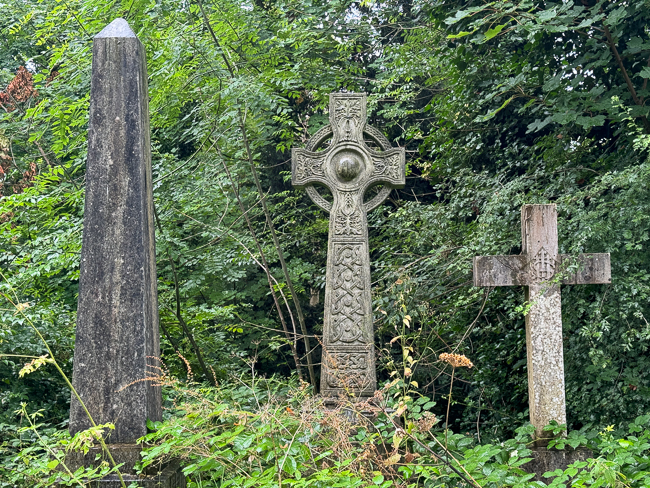
The obelisk is William Chadwick, a stonemason, architect, engineer, speculative builder, and entrepreneur. The Celtic Cross is Sydney Carlyon Grier BA, a romantic novelist whose real name was Hilda Caroline Gregg. She began writing when she was thirteen and published her first short story at the age of eighteen. Between 1894 and 1925, she published 32 novels. The cross is Frederick Gorringe, who owned a small drapery shop on Buckingham Palace Road, Belgravia. His business was patronized by the nobility and gentry. He prospered and expanded, and by 1859, occupied 3 shop premises.
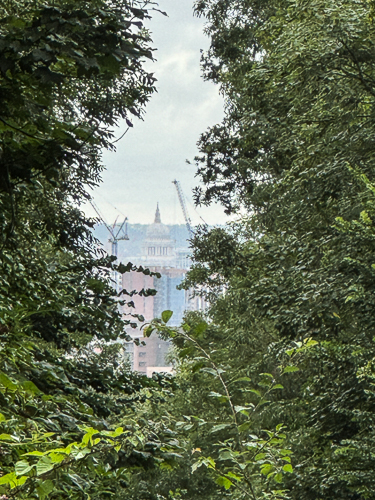
It was a rainy day, but through the clouds, you could see St. Paul Cathedral.
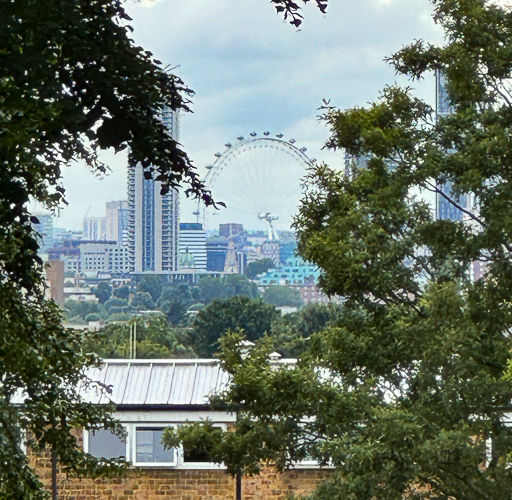
From a little farther on, you can see The Eye.
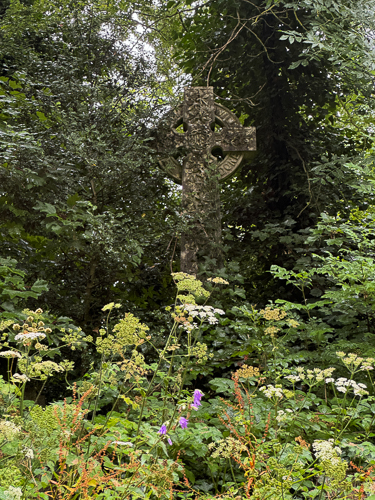
*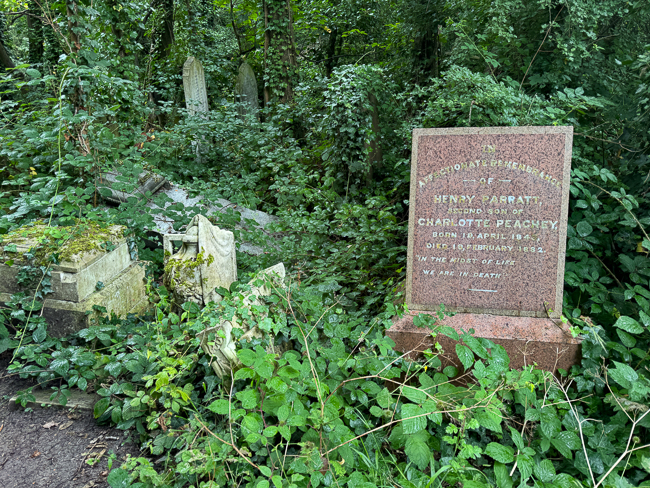
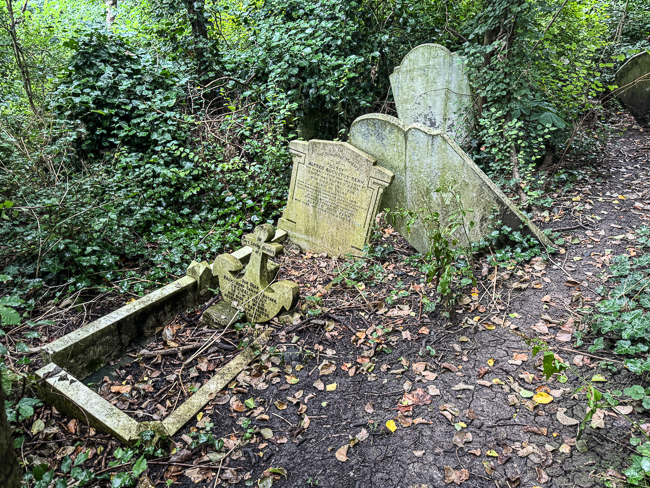
The anchor reads Our dear brave hero sailor brother Reginald Bult of HMS IRIS II who died of wounds received at Zeebrug April 23rd, 1918, ages 21 years.
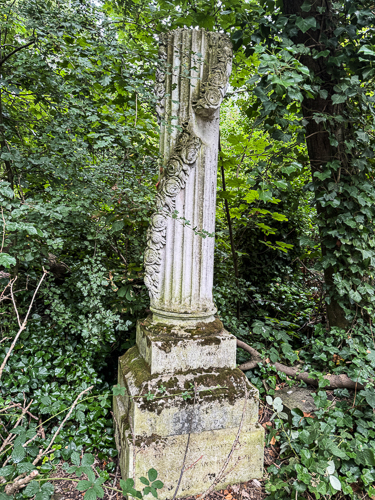 *
*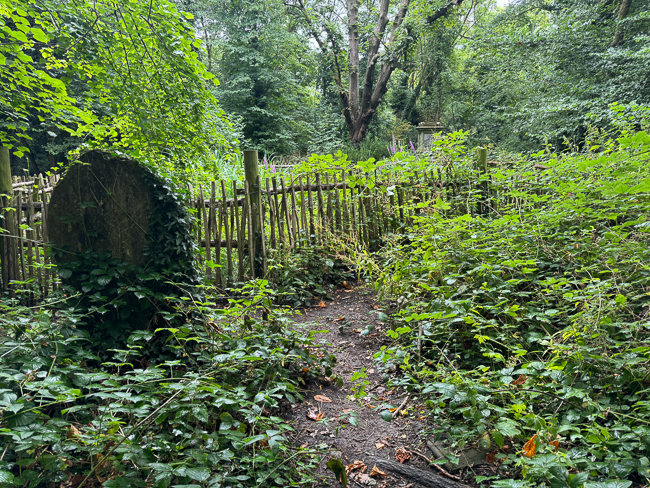 *
* 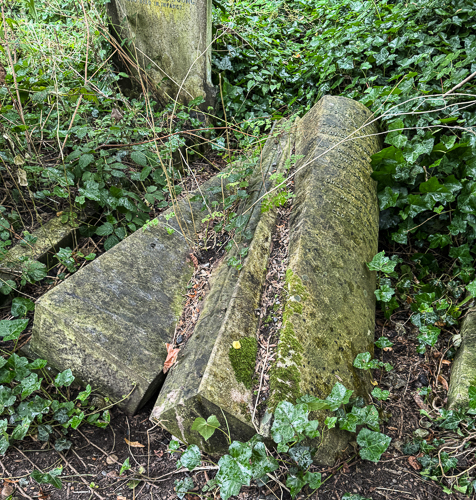 *
*
*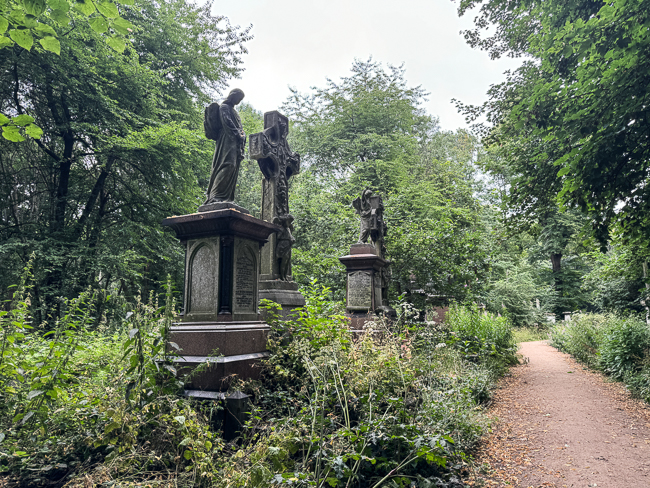 *
*